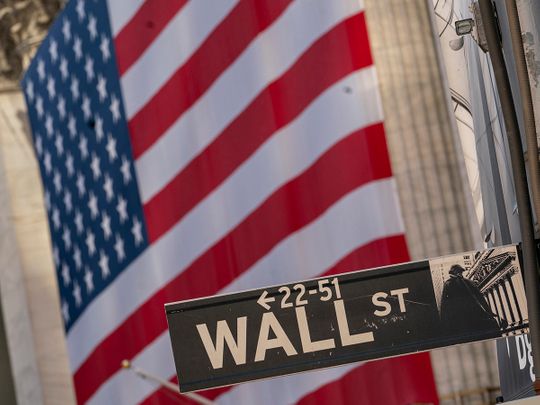
New York: US stocks closed lower for a third straight session on Tuesday as a rise in job openings fueled fears the US Federal Reserve has another reason to maintain its aggressive path of interest rate hikes to combat inflation.
The benchmark S&P 500 index has tumbled more than 5 per cent since Fed Chair Jerome Powell on Friday reaffirmed the central bank’s determination to raise interest rates even in the face of a slowing economy.
Labor demand showed no signs of cooling as US job openings rose to 11.239 million in July and the prior month was revised sharply higher. A separate report showed consumer confidence rebounded strongly in August after three straight monthly declines.
“They have to weaken the labor market and how are they going to do that they are going to jam rates and make things so expensive that people are going to pull back, demand is going to fall off, and people are going to get laid off,” said Ken Polcari, managing partner at Kace Capital Advisors in Boca Raton, Florida.
“It locks them in even further.” The data increases the focus on the August non-farm payrolls data due on Friday.
The Dow Jones Industrial Average fell 308.12 points, or 0.96 per cent, to 31,790.87, the S&P 500 lost 44.45 points, or 1.10 per cent, to 3,986.16 and the Nasdaq Composite dropped 134.53 points, or 1.12 per cent, to 11,883.14.
New York Fed President John Williams said on Tuesday the central bank will likely need to get its policy rate about 3.5 per cent and is unlikely to cut interest rates at all next year as it fights inflation.
However, Atlanta Fed President Raphael Bostic said in an essay published on Tuesday the Fed could “dial back” from its recent string of 75 basis point hikes if new data shows inflation is “clearly” slowing. Richmond Fed President Thomas Barkin said the Fed’s pledge to bring inflation down to its 2 per cent goal will not necessarily result in a severe recession.
Traders are pricing in a 74.5 per cent chance of a third straight 75-basis point rate hike at the Fed’s September meeting.
Each of the 11 S&P 500 sectors were in negative territory, with the energy sector down 3.36 per cent, the biggest percentage decliner, as oil prices settled down more than 5 per cent on concerns that the slowing of global economies could sap demand.
Rate-sensitive megacap growth and technology stocks such as Microsoft Corp, down 0.85 per cent, and Apple Inc, off 1.53 per cent, were among the biggest drags on the benchmark index.
Both the S&P 500 and the Nasdaq have broken below their 50-day moving average. The S&P 500 also briefly fell below the 50 per cent Fibonacci retracement level from its June low to August high, another key technical indicator watched by analysts as support.
The CBOE Volatility index, also known as Wall Street’s fear gauge, rose for the third straight session and hit a six-week high at 27.69 points.
Adding to worries, Taiwan’s military fired warning shots at a Chinese drone which buzzed an islet controlled by Taiwan near the Chinese coast.
Best Buy Co rose 1.61 per cent as one of the biggest gainers on the S&P 500 after it reported a smaller-than-expected drop in quarterly comparable sales thanks to steep discounts.
Volume on US exchanges was 10.51 billion shares, compared with the 10.54 billion average for the full session over the last 20 trading days.
Declining issues outnumbered advancing ones on the NYSE by a 4.27-to-1 ratio; on Nasdaq, a 2.44-to-1 ratio favored decliners.
The S&P 500 posted no new 52-week highs and 18 new lows; the Nasdaq Composite recorded 15 new highs and 217 new lows.












